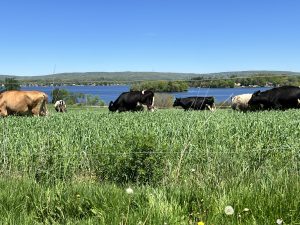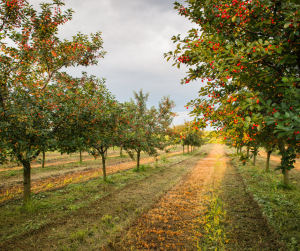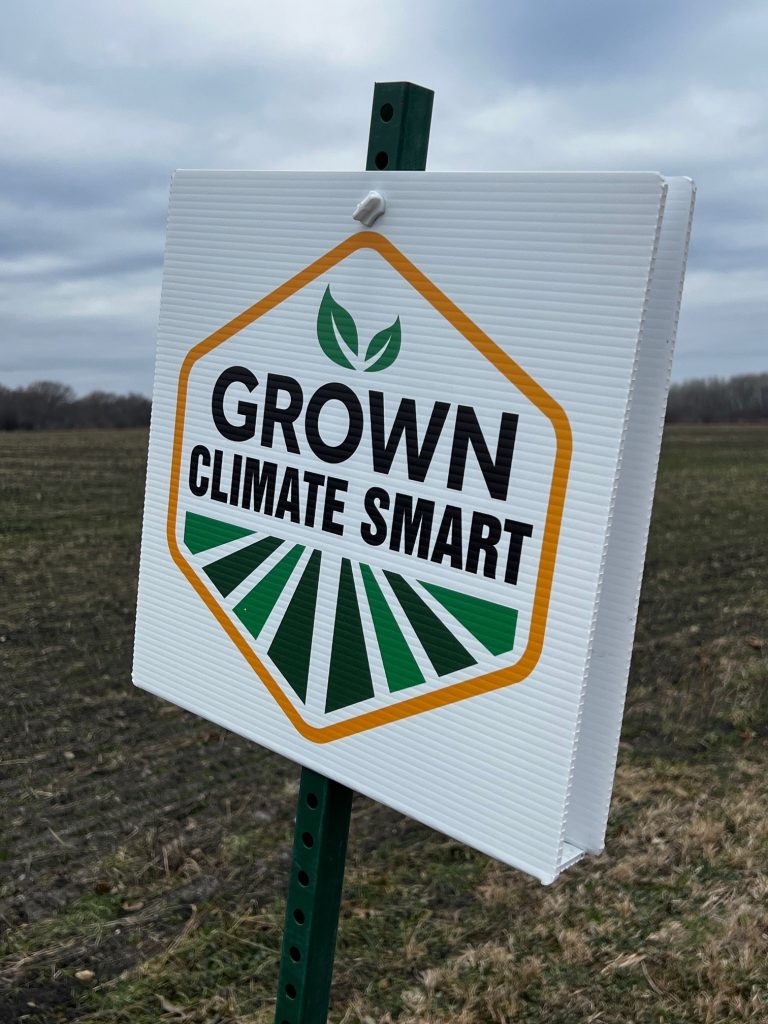Wisconsin has set ambitious climate goals: to slash greenhouse gas emissions by half from 2005 levels within the next five years and to achieve net-zero emissions by 2050. In 2020, the Governor’s Task Force on Climate Change identified a number of policy pathways to reducing emissions in the agricultural sector that Govenor Evers signed into an Executive Order (EO 38) in 2022. This order directed funding and state programs to incentivize conservation agriculture practices like no-till, short-season cover crops, and nitrogen fertilizer management. These practices have positive benefits (such as improving water quality and soil health and reducing erosion), and state and federal agricultural programs have invested billions of dollars into incentivizing their adoption. But will these practices and investments have the greatest impact on reducing our agricultural emissions? Are they truly “climate-smart”?
What are the most effective agricultural practices for significantly reducing Wisconsin’s agricultural emissions?
At what scale do we need to rapidly adopt these practices if we are to meet net-zero goals?
What are the primary barriers to adoption of these practices faced by Wisconsin farmers, and what policies are needed to transform our agricultural sector from a net-emitter into a net-sink of greenhouse gas emissions?
Over the last two years, Clean Wisconsin has been working hard to answer these questions by analyzing the greenhouse gas reduction potential of 13 different agricultural practices commonly used in Wisconsin. These include the practices incentivized through Governor Evers’ 2022 Executive Order (i.e. cover crops, no-till practices, and optimization of nitrogen fertilizer management), but also other practices known to have multiple soil, water and climate benefits such as agroforestry. riparian buffers, windbreaks, alleycropping, silvopasture, perennial row crop production, managed grazing, and several others. At the same time, we have been partnering with Michael Fields Agricultural Institute, Savanna Institute and UW-Madison’s Grassland 2.0 to pilot three of the most promising, innovative agricultural solutions in our analysis:

Managed grazing: establishing a learning hub to demonstrate how managed grazing for beef and dairy cows can boost farm profits, improve water quality, and reduce emissions.
Perennial crops: developing a WI Kernza® Supply Chain Hub for the perennial intermediate wheatgrass known as Kernza®, connecting local growers directly with a local small grain processor and end-users like breweries, distilleries and bakeries to build local markets for the perennial dual-use grain & forage crop, expanding local processing capacity and piloting beers brewed with local Wisconsin-gown Kernza®.
Future WI Crop Suitability: mapping the projected changes to over 40 crops’ suitability, including 11 of Wisconsin’s top economic crop commodities and over 30 tree crops, perennial row crops (like Kernza®), and emerging annual crops.
Clean Wisconsin has been drawing on these pilot projects to identify the key barriers to adopting natural climate solutions. These challenges vary, affecting farmers, rural agricultural entrepreneurs—such as berry, nut, and grain processors—as well as urban businesses like Karben4 Brewing Co., whose interest in the environmental and social benefits of Kernza® has already led to two Kernza® beer releases, including a trial batch of their nationally distributed Fantasy Factory IPA. These pilot projects, and the people they have served, provide important feedback loops to inform state policy, incentive programs and supply chain development strategies. They also demonstrate tangible on-the-ground impacts, proof of concept, and replicable, scalable models to inform the strategies identified and urgently needed to mobilize the magnitude of action needed to meet net-zero goals by 2050.

Using the best science available, we can now definitively point to the agricultural practices that have the greatest potential for reducing agricultural emissions in Wisconsin, and at what scale of adoption Wisconsin will need these practices implemented to achieve net-zero by 2050 in the agriculture sector. We have identified the kinds of policy and program incentives that will be necessary to drive adoption and remove the barriers standing in the way. Our results— A Natural Climate Solutions Roadmap to Net-Zero by 2050 for Wisconsin Agriculture— will be released to the public by the end of October.
Wisconsin stands at a crossroads: we can continue with business as usual or lead the way in sustainable agriculture. With this roadmap, our state has an opportunity to pioneer real climate solutions, ensuring a thriving agricultural sector and a healthier Wisconsin for future generations.
We can’t wait to share it with you!

